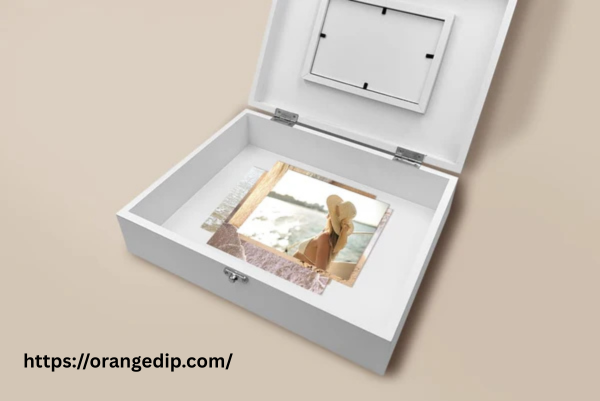We have all been there, searching through our phones for a picture from five years ago that makes us smile or finding a box of old family pictures in the garage that takes us back to simpler days. We treasure our memories, right? These are the events that define our relationships, the tales that help us to define ourselves, and the legacy we leave for the next generations.
Still, most of us are unintentionally making crucial errors that could permanently destroy these priceless jewels despite their value. Let’s explore the hidden dangers today that might be undermining your efforts at memory preservation—and more importantly, how to stay clear of them.
The Digital Delusion: Infinite Thinking Cloud Storage
Here’s a reality check that might sting a little: the cloud storage you are depending on isn’t as permanent as you believe. Many Australians mistakenly believe that uploading images to Google Photos, iCloud, or Dropbox ensures their permanent safety. Though practical, cloud storage is not perfect.
Imagine this:
- The service provider changes their terms and conditions.
- Your account gets hacked.
- You forget your password and cannot retrieve it.
Years of memories suddenly could vanish overnight. The fact that many cloud services compress your images, so lowering their quality every time they are handled, raises even more questions.
The answer is to treat cloud storage as one component of your preservation plan rather than completely discount it. Think of it like keeping a spare key under the doormat; it’s useful, but you shouldn’t depend on it as your only way to enter the house.
The Quality Compromise: Approaching “Good Enough”
One of the most terrible mistakes people make is sacrificing quality to save time or money. Although using the least expensive online service or printing your pictures at the neighbourhood grocery store seems reasonable, these choices can have terrible long-term effects.
Often using inferior paper and inks that fade, yellow, or degrade in a few years, budget printing companies originally seeming to be a bargain, your wedding pictures have turned sepia-toned, or your children’s first steps have vanished from view, so turning into a costly mistake.
Investing in art quality prints makes all the difference in maintaining your most precious memories. Designed to last decades, sometimes even centuries, professional-grade papers and archival inks are vibrant and clear for the next generations. Indeed, it costs more initially, but can you really assign a value to permanence in cases involving priceless memories?
The Trap of Format: Choosing Longevity Lessened by Convenience
Not too far off floppy discs? VHS cassettes? Cassette drives? Originally innovative storage options, these are almost extinct today. Many of today’s digital formats will meet the same end depending on your decisions.
Keeping your pictures in proprietary formats or on devices that might not be supported going forward is like writing your diary in a language only you can read. Indeed, it seems safe now, but what happens when technology advances?
The secret is to pick generally accepted, standard formats like JPEG for images and MP4 for videos. These years-old formats are probably going to be compatible with upcoming technologies. Furthermore, take into account making several copies in several formats; it’s like having a backup strategy.
The Organisation Nightmare: Generating Chaos Rather than Clarity
Imagine this: you search for that ideal picture from your most recent family vacation but can’t recall whether you stored it as “IMG_2847.jpg” or “Beach_day_maybe.jpg,” or maybe it’s buried in a folder just labelled “Photos 2023.” Not too new, sound familiar?
Among the main enemies of memory preservation is poor organisation. Your photos become like books in a library without a clear, consistent system—technically all there, but practically difficult to locate when you need them without a catalogue.
Establish a logical folder system that appeals to you and follow it. Think about planning by year, then by event or month. Create clear filenames including dates and concise descriptions. Above all, be consistent; if you begin a system, commit yourself to keeping it running.
The Single Point of Failure: Stashing All Your Eggs in One Basket
Here’s a situation that keeps digital preservation experts awake at night: you’ve meticulously arranged all of your pictures on the hard drive of your computer, created lovely folders, and even backed them up to an external drive. Then disaster strikes—a house fire, flood, or burglary claims both your computer and your backup drive.
More often than you would believe, this is what is known as a single point of failure. Many people place their backup drives next to their computers, putting both at risk of destruction in the same incident.
Keep three copies of your critical data, save them on two separate media, and save one copy offsite according to the 3-2-1 rule. This could mean keeping copies of your computer, an external drive, and cloud storage—or maybe lending a backup drive to a friend or relative to keep at their house.
The Procrastination Trap: Searching for the Perfect System
Maybe the riskiest mistake one can make is waiting for the ideal chance to correctly preserve your memories. You tell yourself you will arrange everything:
- “when you have time”
- “when you find the perfect system”
- “after you research the best options”
Your computer crashes, your phone fills up, or your old pictures fade in that shoebox under the bed. Although a perfect system does not exist, having any system is preferable to having no system at all.
Start small or anywhere at all. Choose fifty of your best pictures from last year and have them professionally printed. On your computer, compile one neatly ordered folder. The secret is to start; you can always polish your system as you go.
Dealing with Your Tangible Treasures: Physical Preservation Oversights
Although digital preservation is usually our first concern, those actual pictures, records, and mementoes also deserve attention. Many people unintentionally destroy their physical memories with ill-considered handling or inadequate storage.
Direct sunlight, too much heat, humidity, and acidic storage materials all threaten physical photographs and documents. Although that shoebox in the garage seems like a safe spot, humidity and temperature swings could be gradually erasing your memories.
When debating picture printing and framing, choose UV-protective glass and acid-free materials. Keep loose pictures cool, dry, and away from direct sunlight in archival-quality boxes or albums. Handle them with dry, clean hands; if handling especially valuable or old objects, think about donning cotton gloves.
Losing Control of Your Memories: The Sharing Mistake
Sharing memories is simpler than it has ever been in our connected world. Many people do, however, make a mistake when sharing pictures on social media or messaging apps: they neglect to retain the original quality versions.
Most social media sites compress and lower the quality of a picture you post. Should you later save that shared version as your “copy,” you have permanently lost the original quality. Share from copies always; never from your master files.
Acting Now: Your Journey of Memory Preservation Begins Here
Actually, preservation of memory is a journey rather than a destination. Every picture you shoot, every document you scan, and every moment you catch adds to your continuing narrative. Although the errors we covered today are completely avoidable, only if you act will they be so.
First, start with what is most important to you. Are those pictures of your wedding? First years of your children’s lives? The letters sent by your grandparents? Select one collection and use these ideas. Professionally print those pictures, arrange them correctly, make several backups, and keep them safe.
Remember: your memories are not replaceable. You cannot go back and re-experience these events, unlike almost everything else in life. The time and money you spend correctly preserving them is an investment in your family’s legacy and your own peace of mind, not a cost.
Today, what first action will you take to guard your priceless memories? Your future self will appreciate your right now decision.


